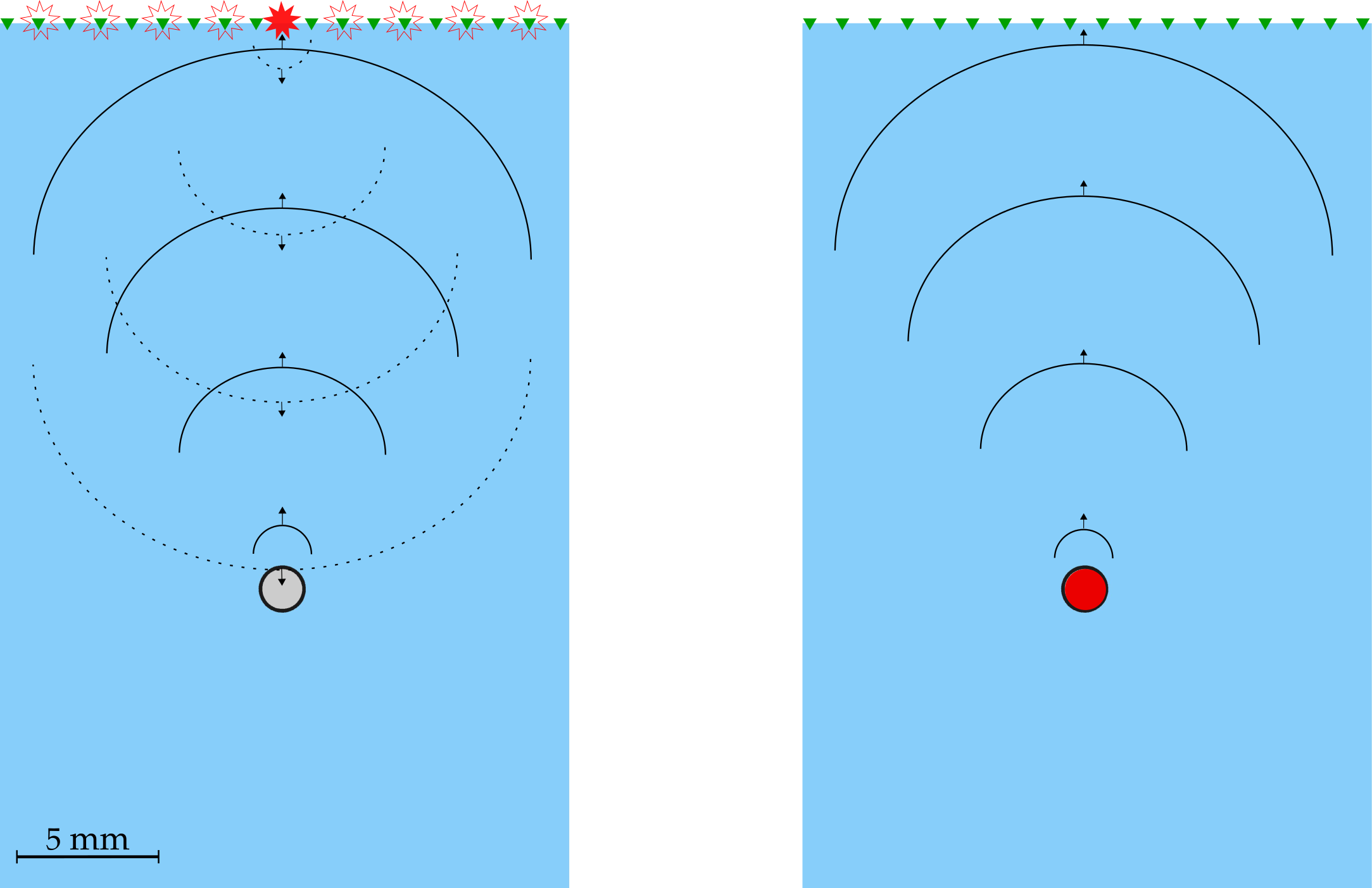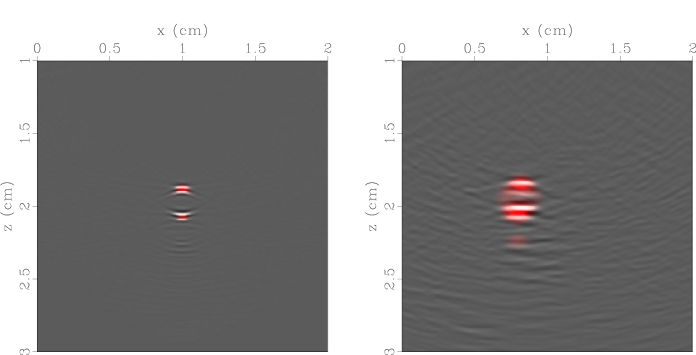All-optical photoacoustic and laser-ultrasound imaging allow for broadband images of optical absorption and acoustic scattering to be obtained. Our nonconfocal imaging approach involves independently controlling the source and detector location, such that scattering between each source-detector pair is known. This is particularly important for reflection-mode systems, where blurring, artifacts, and a limited aperture are problematic. We have shown that focusing is improved by 15-30% in simulated and experimental data, respectively, and reverberation artifacts are suppressed in laser-ultrasonic images. To learn more, check out our recent paper in Journal of Biomedical Optics.

Left: nonconfocal laser-ultrasound generation. A single source (filled red burst) is excited at the surface, and a line of detectors (green triangles) records the resulting scattered field at the surface. This process is repeated for several sources along the surface. Right: photoacoustic sources are excited inside a phantom vessel and the resulting wavefield is recorded at the surface.

Nonconfocal LUS (grayscale) and PA (red) images generated for a phantom vessel. The vessel is filled with optically absorbing dye to generate photacoustic waves, and has a wall with high acoustic contrast that scatters laser-ultrasonic fields. Images for simulated (left) and experimental (right) data are shown.